
Guests
- Vivian Vázquez Irizarryco-director and co-producer of the documentary Decade of Fire.
- Gretchen Hildebranco-director and co-producer of the documentary Decade of Fire.
We continue our discussion with Vivian Vázquez Irizarry and Gretchen Hildebran, co-producers and co-directors of the PBS film “Decade of Fire,” which re-examines the devastating fires that swept the South Bronx throughout the 1970s. At the time, the blazes were often blamed on the residents themselves and became a symbol of urban decay and dysfunction. But the filmmakers say the real story behind the Bronx fires is one of systematic disinvestment in poor black and brown communities, an unofficial policy of “planned shrinkage” with the goal of emptying the Bronx of original residents through neglect.
Transcript
AMY GOODMAN: This is Democracy Now!, democracynow.org, The War and Peace Report. I’m Amy Goodman, as we continue with Part 2 of our discussion of Decade of Fire. No, we’re not talking about what’s happening in California today, the horror of the wildfires. We’re talking about, well, the new documentary that takes us back to the 1970s, when the Bronx faced a near-constant barrage of fires that displaced almost a quarter-million people, devastating an entire community. Eighty percent of the housing stock burned to the ground. The Bronx was burning. Who was lighting the match?
For more, we continue our conversation on the film with the co-producers and directors Vivian Vázquez Irizarry and Gretchen Hildebran. Vivian was born and raised in the Bronx.
Thank you for staying with us for Part 2 of the conversation. So, Vivian, this is a story you are not just discovering now. This is a story you lived growing up. In Part 1, you explain the stench of the fires, the constant fires. Who set these fires?
VIVIAN VÁZQUEZ IRIZARRY: That’s a complicated question, right? You will hear — the media will say that, and had said back then, that it was the young people who burned the buildings, gang members, folks who didn’t know — didn’t have anything better to do, who wanted to change apartments. But what we learned was that these young people were hired by landlords and others to set buildings on fires for profit. And so we have a particular character in the film who talks about how our young people back then were, you know, just so poor, and they took money to burn buildings. But we never talk about those landlords or those other people who hired these young people to burn buildings. It was a profit industry. It was a business to burn buildings.
AMY GOODMAN: And you also have the fact that the Bronx was a tinderbox. The housing was so degraded. Talk about what planned shrinkage is.
VIVIAN VÁZQUEZ IRIZARRY: Planned shrinkage was an unofficial policy that promoted leaving it that way so that the Bronx can just empty out, people will move out, and perhaps we can build a parking lot or a mall. But the idea is to shrink the population of a particular area.
AMY GOODMAN: So, first, mass movements of people, poorer people going from Manhattan to the Bronx, and then the closing of fire stations, so critical, the basic public services, and trash collection. When you have this being stopped, then you have a community that is much more likely to be devastated, for example, by fires.
VIVIAN VÁZQUEZ IRIZARRY: Correct. And that was policy. It was policy supported by the RAND Corporation and other management — government management bureaucrats, who said, “We don’t need extra services. We don’t need extra firehouses.”
AMY GOODMAN: And it wasn’t extra. It was essential.
VIVIAN VÁZQUEZ IRIZARRY: No, it wasn’t extra. It was completely essential. But those services were cut, which led to, you know, the destruction and devastation of my community even more. Right? Who wants to come outside your house and see garbage? Who wants to come outside your house and see another fire? You know, we went — my family and my neighbors, we went to Lincoln Hospital for our healthcare. Lincoln Hospital was a condemned hospital while we were there. And, you know, I didn’t know about that really as a kid. All I remember was that it was dark all the time, because the only section open was the emergency pediatric ward. You know, my mother struggled to find services for us in different ways, which young people and children shouldn’t have to live like that.
AMY GOODMAN: Now, let’s clarify: We’re actually talking about not all of the Bronx, but the South Bronx.
VIVIAN VÁZQUEZ IRIZARRY: The South Bronx, mm-hmm.
AMY GOODMAN: And explain the difference.
VIVIAN VÁZQUEZ IRIZARRY: So, the South Bronx actually was first considered the South Bronx, geographically speaking, right? So that was like at the beginning of like 138th Street to, I would say, Hunts Point, Southern Boulevard. And then, politically, as the fires grew and as people of color began to move to the Bronx, the term South Bronx became a political term to identify: “That’s where the poor people of color live.” You know, so now the South Bronx is considered south of Fordham Road, which it really is not. I mean, Fordham Road is not South Bronx; it’s sort of Mid-Bronx.
AMY GOODMAN: Gretchen Hildebran, you weren’t born in the Bronx, you didn’t grow up there, but you were fascinated by the story when Vivian came to you. As you learned about this massive crisis, devastation of a community, what were your thoughts?
GRETCHEN HILDEBRAN: I think, you know, coming to New York and, like, learning this history for the first time, it was a lot of shock, that — you know, learning not only about what happened there, but that it was the direct result of city policy, and that those policies —
AMY GOODMAN: This was under Mayor Koch.
GRETCHEN HILDEBRAN: Oh, well, these policies began under Mayor Lindsay in the ’60s. I mean, and if you go back to redlining, it began under FDR and the 1937 Housing Act, which codified into law discriminatory practices to keep people of different races from living in the same neighborhoods.
AMY GOODMAN: Explain.
GRETCHEN HILDEBRAN: So, that was that Housing Act, basically — and we actually put a little excerpt from it in the film — which it says, you know, that when the government was proposing guidelines to banks, to insurance companies, to the people who hold the money that you need in order to move or to fix up your home or your building, they said, you know, these guidelines are designed to keep people who are not white from living with people who are white. And if a nonwhite person moves into any particular neighborhood, that block or that entire neighborhood, as you saw in that clip, is going to get shut off from the funds that are needed to buy a building, to fix a building, to upgrade the wiring.
So, many of these buildings, you know, they were built before the war. The wiring was never upgraded to make it possible to live there safely. So, when people started crowding into these buildings in the mid to late '60s, that kind of contributed to this crisis of fire, which was really happening all over the city at that time, but it was the Bronx specifically that was burning the fastest. And the city knew it. And instead of responding to that crisis, that's when they started cutting firehouses.
AMY GOODMAN: And explain the significance of those firehouses being cut —
GRETCHEN HILDEBRAN: Right.
AMY GOODMAN: — and what exactly in the ’70s, then, for example, Mayor Koch knew?
GRETCHEN HILDEBRAN: Right. Well, by the time Mayor Koch arrived, the city had already been through the 1975 financial collapse, which came very close to bringing the city into bankruptcy. And the reason the city did not go into bankruptcy, it was kind of like the original bailout, which we saw replayed not that long ago — that the state organized a panel of nonelected bankers to take over the city’s finances. And those bankers made decisions about cutting services in the city across the board. They laid off 40,000 city workers, including firefighters, police, sanitation workers, teachers, people who worked in public hospitals.
And as one of our firefighters in the film says, this is after the fire department had already been cutting. So, when they got to that point in 1975, the fire service was at its lowest point. You know, in terms of numbers and ability to fight fires, it was at the lowest point in two decades, even though the fires, if you look at the fire rates at this time, they are just catastrophic.
AMY GOODMAN: Vivian, I was particularly interested in just you talking about how you began this as a teacher developing a curriculum to look at how the Bronx became what it was and how it was devastated. Talk about building that curriculum and why, actually, it was rejected.
VIVIAN VÁZQUEZ IRIZARRY: So, I wasn’t a teacher. I was a supervisor of a community-based organization that ran youth development programs. At that time, the Bill Gates Foundation started the small schools movement, and New York City was required to partner with community-based organizations to start a small school. So, we partnered with a particular school to start up a high school. And I actually brought in Julia Allen to work with us to start building this community school.
We wanted to develop a curriculum to teach the incoming ninth graders Bronx history. And we showed the curriculum to our bosses, and they rejected it. They thought it was too one-sided, and they thought that it wasn’t ready to teach the students. So, the curriculum was never taught. Nevertheless, now, as a result of the film, we do have a curriculum. We have been working with a group of South Bronx teachers that —
AMY GOODMAN: What do you mean “too radical”? It was considered “too radical.”
VIVIAN VÁZQUEZ IRIZARRY: Too one-sided. That’s what I was told, it was too one-sided. You know, the Bronx was dirty. Graffiti was not pleasant to look at. We described graffiti and we characterized graffiti as an expression of resistance that young people felt, and, you know, therefore made art. Right? We talked about hip-hop as being, again, a form of creative resistance. And it just was not accepted.
AMY GOODMAN: And yet that’s really formed the basis of this film.
VIVIAN VÁZQUEZ IRIZARRY: Sure. Well, because we continued to talk about what happened in the Bronx. We continued to speak to not only the devastation of the fires, but the creativity, the innovation and the spirit of the people in the South Bronx.
AMY GOODMAN: And that’s what I want to go to right now, a clip from a Decade of Fire, this clip featuring residents from the Banana Kelly Community Improvement Association.
LEON POTTS: Banana Kelly’s idea or purpose in organizing has been to try and save our neighborhood.
HARRY DIRIENZO: People from the area slowly got involved, because they went to Washington Avenue and said, “Oh my God! Look at this. These people are like us. They’re doing work. They’re learning stuff. And they’re rebuilding these buildings, and they’re going to live here.”
ROBERT FOSTER: These buildings, they had solar panels on the roof. They had wood grain floors, beautiful modern apartments. And it was like, “Oh, we can have this?”
HARRY DIRIENZO: People were saying, “What kind of fools are you? You don’t own those buildings. What are you doing in there? You’re working for free? What are you, crazy?” But it was something about the people that I was working with. They didn’t want to give up. So, we took over three buildings and just started to clean them out.
AMY GOODMAN: That’s a clip from Decade of Fire, that’s airing on PBS starting on Monday. Gretchen Hildebran, this spirit of resistance and renewal, we’re not talking about video today; we’re talking about video from the ’70s and from the ’80s. Explain the Banana Kelly Association.
GRETCHEN HILDEBRAN: So, Banana Kelly, you know, we were really lucky to be able to talk to a number of people who were part of this organization, even though it began over 40 years ago — and is still going today. But originally, you know, Banana Kelly was one block of Kelly Street that is kind of curved like the shape of a banana. That’s where they get the name. And, you know, this was a group of residents, and one family, in particular, the Potts family, who had — while everyone else was fleeing the Bronx, this family was an African-American family that had moved up here from Mississippi, and they had scrimped and saved and bought buildings, and they took care of those buildings and the people who lived in them as family. And the people on that block were — you know, many of them were actual family, and the ones who weren’t were gathered into the fold.
And as they saw things kind of burning and going into decline around them, they began to see buildings on their own block burn, and they just kind of came to this point of realizing, like, “This is it. This is our spot. We don’t have somewhere else to go, and we’ve got to do something to take care of this block, so we at least can stay here.” And so, with the inspiration of this other group called the People’s Development Corporation, that had occupied — they were like the original occupiers. They saw abandoned buildings north of Banana Kelly and had started renovating them and had started doing something called sweat equity, which we know about today but was — you know, they were really thinking outside the box.
And so, they would take over these buildings and fix them themselves. They would bring in people to train them as carpenters, electricians. They would get really small micro grants to buy materials. But they really had no support beyond the community. And they put in the hours, you know, and as they began doing this work, it grew. Like more people, even from beyond that block, began to see that some other way of surviving this crisis was possible.
AMY GOODMAN: So, you lived there through this period, Vivian. Were you aware of, for example, the Banana Kelly Community Improvement Association or groups like it who were fighting back and trying to change the landscape, rebuild this landscape?
VIVIAN VÁZQUEZ IRIZARRY: You know, I was not aware of Banana Kelly, even though they were several blocks from where I lived. I was a member of United Bronx Parents, which was run by Evelina Antonetty and others, and they worked with young people to help clean the block and to clean the park. And I was also very much aware of the struggle to save the Hostos Community College at the time. So those were my organizations, mostly United Bronx Parents, which we call UBP.
AMY GOODMAN: And talk about why you’ve chosen to make this film today – we’re talking about 40 years later — why you see it as significant.
VIVIAN VÁZQUEZ IRIZARRY: So, myself, Gretchen Hildebran, Julia Allen and Neyda Martinez, we all created this film because we needed to flip the narrative that it was the people of the Bronx who burned it, the people of the South Bronx who burned the Bronx. We wanted to show and give a different narrative, that it was actually the people of the South Bronx who saved the South Bronx. We wanted to lay claim to our own history. I want to make sure that young people know that they are living a legacy of survival, of resistance, of renewal, and that we can use the film as an inspiration, or perhaps as a tool kit, to reimagine what our community could be like for the future and to fight injustice.
There was a huge injustice that took place to the people of the South Bronx and in people across the country who lived in inner cities. The poor continually becomes blamed. They get blamed for what happens to them. And in sort of these discriminatory practices, we’re the victims, we get blamed. And we’re hoping that this film would reverse that sentiment and reverse that attitude, in the knowledge that it’s actually others that are destroying us and that we’re the ones that have to put a stop to that.
AMY GOODMAN: I want to thank you so much for being with us and making the film, Vivian Vázquez Irizarry and Gretchen Hildebran, co-directors and co-producers of the documentary Decade of Fire. It begins to air on PBS on Monday.
To see Part 1 of our discussion, go to democracynow.org. I’m Amy Goodman. Thanks so much for joining us.

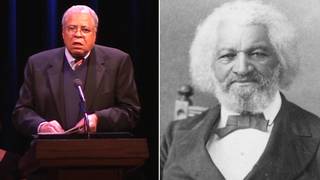
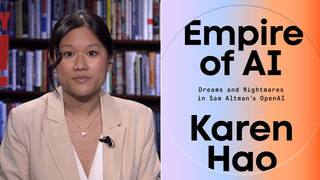
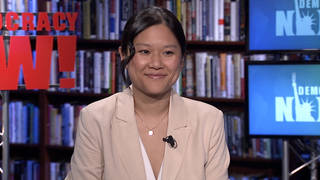

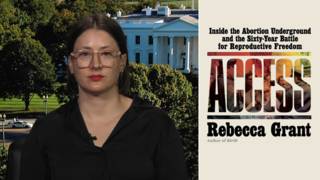
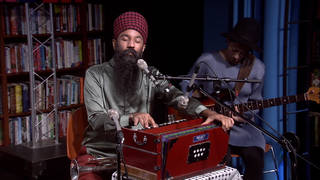
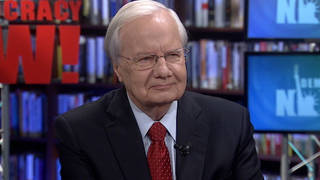
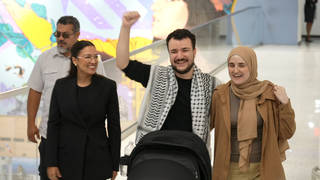


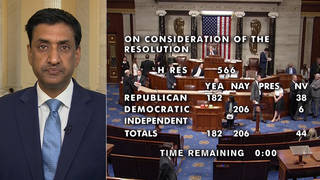
Media Options